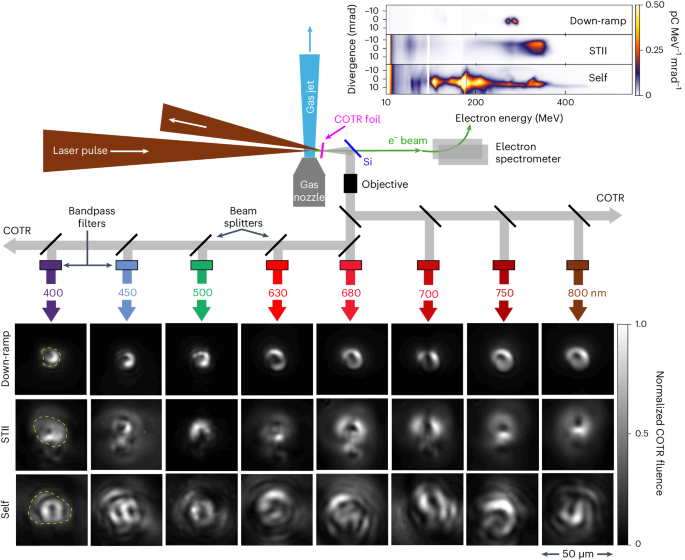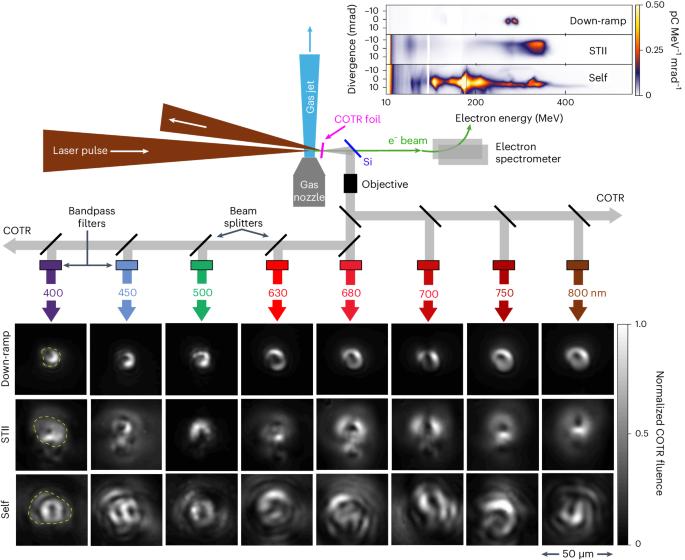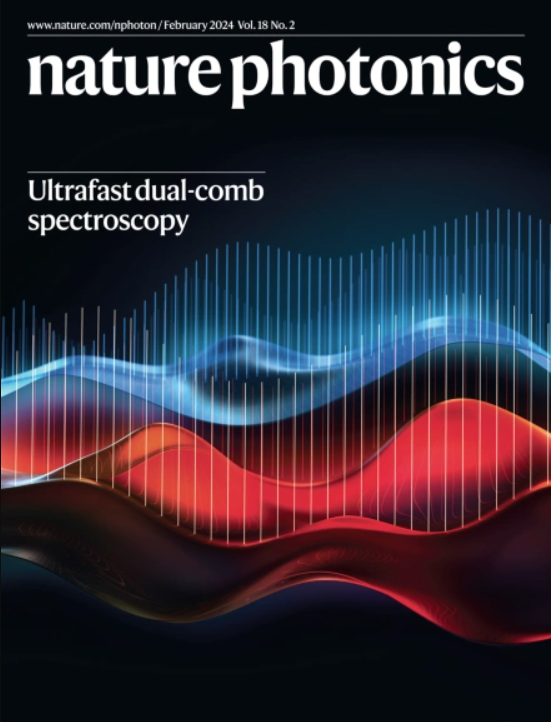揭示微束等离子渚射加速电子束的三维结构
IF 32.3
1区 物理与天体物理
Q1 OPTICS
引用次数: 0
摘要
等离子体汪场加速器使用台式设备产生相对论飞秒电子束。光学和 X 射线诊断确定了它们的电荷集中在一个微米大小的体积内,但其亚微米级的内部分布对自由电子激光器中的增益或对撞机中的粒子产率有着至关重要的影响,却难以确定其特征。在这里,我们通过对激光唤醒场加速的电子束在离开金属箔时产生的不同波长的相干光过渡辐射同时成像,揭示了电子束电荷的相干辐射成分的结构。图像的主要特征与等离子体电子注入唤醒的方式有独特的关联:等离子体密度不连续、电离高Z气体-目标掺杂物或不受控制的激光-等离子体动力学。通过电子能谱、空间平均相干光转换辐射能谱和粒子入胞模拟的额外输入,我们重建了相干的三维电荷结构。研究结果表明,由等离子体加速器驱动的下一代紧凑型 X 射线自由电子激光器需要一种重要的度量方法。本文章由计算机程序翻译,如有差异,请以英文原文为准。


Revealing the three-dimensional structure of microbunched plasma-wakefield-accelerated electron beams
Plasma wakefield accelerators use tabletop equipment to produce relativistic femtosecond electron bunches. Optical and X-ray diagnostics have established that their charge concentrates within a micrometre-sized volume, but its sub-micrometre internal distribution, which critically influences gain in free-electron lasers or particle yield in colliders, has proven elusive to characterize. Here, by simultaneously imaging different wavelengths of coherent optical transition radiation that a laser-wakefield-accelerated electron bunch generates when exiting a metal foil, we reveal the structure of the coherently radiating component of bunch charge. The key features of the images are shown to uniquely correlate with how plasma electrons injected into the wake: by a plasma-density discontinuity, by ionizing high-Z gas-target dopants or by uncontrolled laser–plasma dynamics. With additional input from the electron spectra, spatially averaged coherent optical transition radiation spectra and particle-in-cell simulations, we reconstruct coherent three-dimensional charge structures. The results demonstrate an essential metrology for next-generation compact X-ray free-electron lasers driven by plasma-based accelerators. Imaging the visible light emitted from accelerated electron bunches reveals important information about the three-dimensional charge structure of the bunches, which strongly influences the performance of free-electron lasers.
求助全文
通过发布文献求助,成功后即可免费获取论文全文。
去求助
来源期刊

Nature Photonics
物理-光学
CiteScore
54.20
自引率
1.70%
发文量
158
审稿时长
12 months
期刊介绍:
Nature Photonics is a monthly journal dedicated to the scientific study and application of light, known as Photonics. It publishes top-quality, peer-reviewed research across all areas of light generation, manipulation, and detection.
The journal encompasses research into the fundamental properties of light and its interactions with matter, as well as the latest developments in optoelectronic devices and emerging photonics applications. Topics covered include lasers, LEDs, imaging, detectors, optoelectronic devices, quantum optics, biophotonics, optical data storage, spectroscopy, fiber optics, solar energy, displays, terahertz technology, nonlinear optics, plasmonics, nanophotonics, and X-rays.
In addition to research papers and review articles summarizing scientific findings in optoelectronics, Nature Photonics also features News and Views pieces and research highlights. It uniquely includes articles on the business aspects of the industry, such as technology commercialization and market analysis, offering a comprehensive perspective on the field.
 求助内容:
求助内容: 应助结果提醒方式:
应助结果提醒方式:


